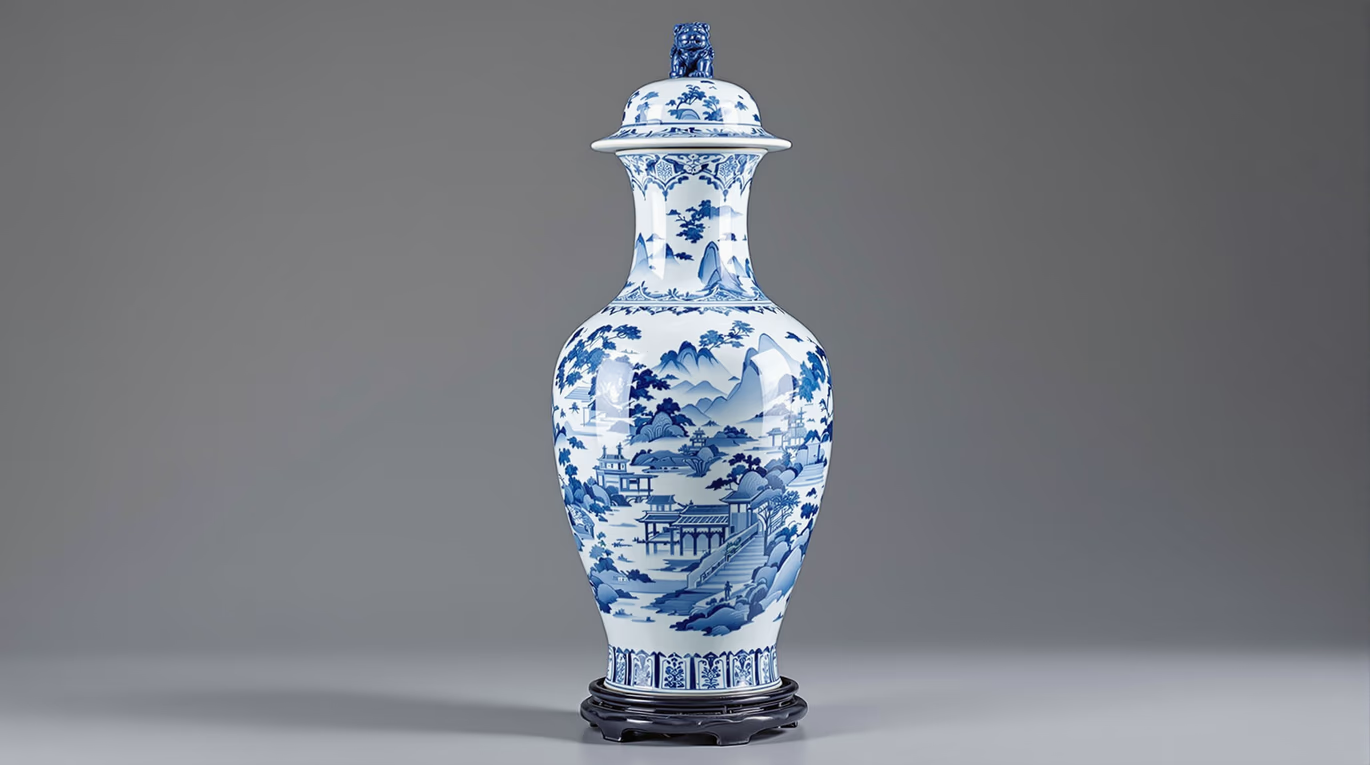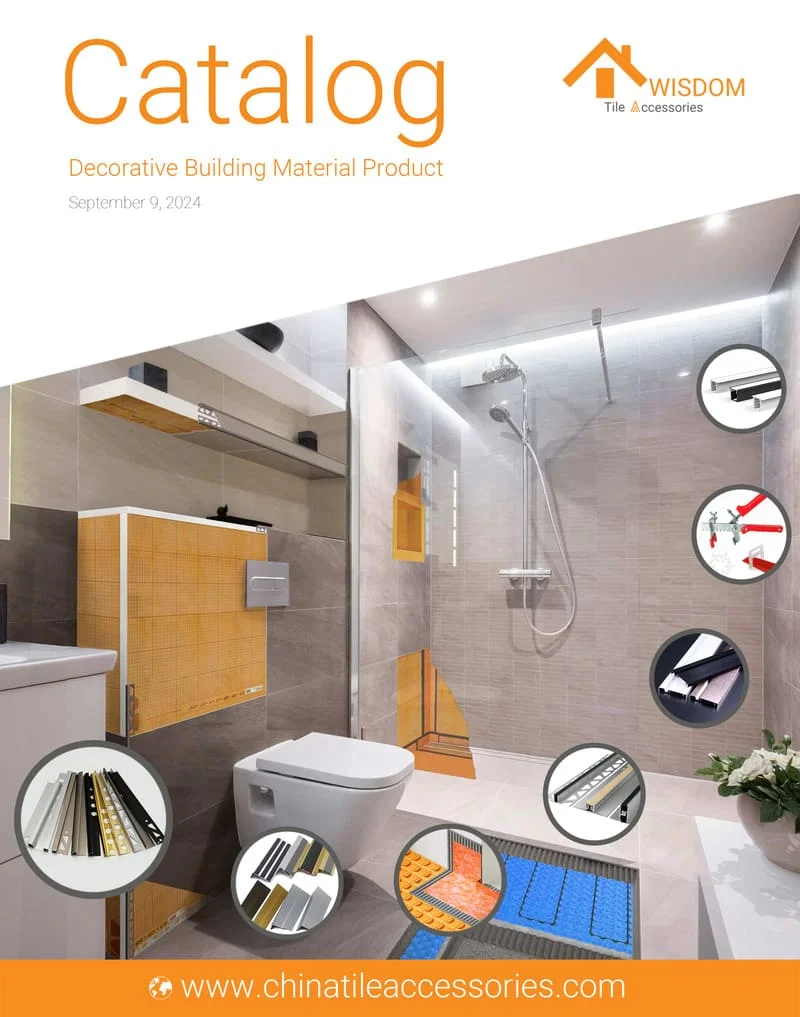
Baluster vases stand as one of the most important breakthroughs in Chinese ceramics. These elegant vessels first appeared during the Yuan dynasty (1279-1368). Their distinctive feminine silhouette features broad shoulders and a body that tapers to the foot or creates a graceful waist before spreading outward. The vase's majestic look comes from its tall bell-shaped lid, which often has decorative elements like fu dogs or oval pinnacles.
Chinese porcelain reached its peak during the Qing Dynasty as these vases became popular everywhere. The vase's broad body served as a perfect canvas that displayed intricate mythological scenes and landscape artistry. These impressive pieces caught the attention of both homes and imperial courts. Master artisans passed their crafting techniques down through generations, which helped establish Chinese vase making as a respected art form across the world.
What is a Baluster Vase in Chinese Ceramics Mean
"The tall, slender shape of this baluster vase is quite restrained. The mouth turns outward only slightly; the neck is short, the shoulder sloping." — National Gallery of Art, Renowned art museum and research institution
Chinese ceramics' architectural influence shows clearly in baluster vases, which get their name from decorative supports in traditional railings. These vessels have a distinctive profile with a strong, rounded body that tapers gracefully to a solid base and ends in an elongated, slender neck.
Definition and Core Characteristics
Baluster vases' physical structure flows in a continuous curve that creates an elegant feminine silhouette. These vessels have broad shoulders that either taper directly to the foot or narrow at the waist before widening near the base. A tall bell-shaped lid sits at the top, often decorated with elements like fu dogs or oval pinnacles.
Historical Development Timeline
Baluster vases' development marks important periods in Chinese ceramic history:
Dynasty | Period | Key Developments |
|---|---|---|
Yuan | 1279-1368 | First emergence as innovative vessel form |
Ming | 1368-1644 | Refinement of shape and glazing techniques |
Qing | 1662-1722 | Peak of technical excellence under Kangxi reign |
These vessels reached their peak during the Qing Dynasty, a time of sophisticated artistic expression. The broad body surface became a perfect canvas for intricate decorative elements, especially when artists depicted scenes from Chinese mythology and landscape art.
Chinese artisans reached their technical peak in the 18th century, as shown by the exceptional porcelain quality during this era. They mastered the balance between form and function, creating vessels that served both practical and esthetic purposes in imperial courts and homes.
Traditional Chinese Vase Shapes Compared
Chinese vase shapes have unique characteristics that set each type apart. Baluster vases showcase broad shoulders and elegant curves, while traditional forms each bring their own esthetic and functional elements.
Baluster vs Meiping Vases
The meiping, or plum vase, is different from the baluster form because of its distinctive proportions. Baluster vases have balanced curves, but meiping vessels come with a narrow mouth, small neck, and high, broad shoulders that taper dramatically to a shallow ring foot. The meiping's design has a specific purpose - to hold single plum blossom branches. Baluster vases are more versatile and work well for both decorative and practical uses.
Feature | Baluster Vase | Meiping Vase |
|---|---|---|
Neck | Long, slender | Short, narrow |
Shoulders | Broad, flowing | High, dramatic |
Body | Gently curved | Sharply tapered |
Base | Flared foot | Ring foot |
Differences from Ginger Jars
Ginger jars have more compact proportions compared to baluster vases. Baluster vases stand tall with elongated necks, while ginger jars have rounded bodies with high shoulders and smaller mouths designed for lids. Both forms serve decorative purposes in modern settings, yet ginger jars started as practical vessels for storing spices, unlike the ceremonial functions of baluster vases.
Comparison with Temple Vases
Temple vases, also known as temple jars, represent another distinct variation in Chinese ceramics. Baluster vases maintain fluid lines throughout their form, but temple vases include more elaborate elements, such as:
- Distinctively flared bases
- More ornate handles
- Pointed lids with decorative finials
Temple vases were originally used in religious ceremonies and display more intricate symbolic motifs than their baluster counterparts. These vases emphasize height and ceremonial presence instead of the balanced proportions of baluster vases, making them eye-catching as standalone pieces or paired displays.
Production Techniques and Materials
"On the front of the vase, peony flowers, branches and leaves were painted with rare skill. The design, done entirely by hand, is very detailed and the convex shape of the vase helps to give it a soft and pleasant movement." — Intondo, Antique and art dealer
Traditional Chinese baluster vases showcase sophisticated techniques that artisans have perfected over centuries. The creation starts with careful material selection and preparation. Glazing and firing procedures must follow exact specifications.
Clay Body Preparation
Chinese porcelain's excellence comes from its unique clay composition. The main materials are kaolin and petuntse, which craftsmen mix in specific ratios to get the best plasticity and strength. A high-quality porcelain clay mixture has:
Component | Purpose | Proportion |
|---|---|---|
Kaolin | Primary clay body | 40-55% |
Petuntse | Vitrification agent | 25-35% |
Feldspar | Flux material | 15-25% |
Silica | Structural stability | 10-20% |
Craftsmen mix these materials with clear, aged clay water that has beneficial bacteria to improve the aging process. The mixture needs to rest for 24-36 hours before going onto absorbing surfaces to dry.
Glazing Methods
Glaze application plays a crucial role in creating distinctive Chinese ceramics. Each layer adds to the final look. The base glaze contains feldspathic materials that create a smooth, glass-like surface when fired.
Master potters developed special techniques to create various effects on baluster vases:
- Copper-red glazes that need exact oxygen control during firing
- Multiple-layer applications to create depth and texture
- Special brushing methods to ensure even coverage
Firing Process Specifics
The firing process needs exact temperature control and proper air management. Chinese kilns reached temperatures between 1200-1450°C, with each stage serving a specific purpose. The kiln's atmosphere shapes the final look - reduction firing creates unique effects through controlled oxygen limitation.
The process happens in three key stages:
- Original heating (700-900°C) removes remaining moisture
- High-temperature firing (1200-1450°C) achieves vitrification
- Cooling period allows gradual temperature reduction
The firing's success depends on precise oxygen management. Carbon and oxygen must combine to create proper combustion conditions. This delicate balance determines the glaze's final color and quality, which defines traditional Chinese porcelain's character.
Authentication Guidelines
Authentication of Chinese baluster vases needs a close look at several physical features. Experts look at specific signs that show a piece's true age and where it came from.
Age Indicators
A vase's foot rim gives us vital clues about its age. The foot's appearance confirms if a piece is genuine after we check other features. Expert craftsmen look at the rim's whiteness and texture changes that evolved through different dynasties. Chinese porcelain reached its peak quality in the 18th century, so pieces from this time should show exceptional craftsmanship.
Period | Foot Characteristics | Glaze Features |
|---|---|---|
Ming Dynasty | Unglazed, gritty texture | Thicker application |
Early Qing | Partially glazed rim | Even distribution |
Late Qing | Fully glazed, smooth | Thin, consistent layer |
Quality Assessment Criteria
The quality check goes beyond what we see on the surface. Real pieces usually show:
- Signs of age-appropriate wear
- Crackle patterns in glaze consistent with the period
- Natural marks from soil exposure
- Evidence of proper kiln firing techniques
Old pieces show small flaws from traditional making methods. Perfect symmetry often points to modern production.
Common Reproduction Signs
Modern copies give away their recent origin. Copyists can't match the authentic foot appearance, though they sometimes get close. Reign marks need extra attention because marks alone don't prove age. Fake marks appear 100 times more often than real ones.
An interesting twist happened between the 1920s and 1960s. Many genuine mark-and-period vases became lamps during this time. Now, forgers drill holes in their copies to make them look like these historic modifications. Collectors should be extra careful with drilled pieces because holes don't guarantee authenticity.
Market Value and Collection
Chinese baluster vases' valuation reflects a complex mix of historical worth and market forces. Global auction sales of Chinese art and antiques reached USD 5.70 billion in 2019.
Price Range Factors
Several interconnected elements determine Chinese baluster vases' market value. A detailed analysis shows these main factors:
Value Factor | Impact Level | Key Considerations |
|---|---|---|
Age & Period | High | Dynasty authenticity, reign marks |
Decoration | Medium-High | Artistic quality, motif rarity |
Condition | Critical | Original state, restoration work |
Provenance | Significant | Ownership history, documentation |
Premium segments show remarkable staying power in the market. A 300-year-old enameled glass vase from Beijing sold for USD 26.40 million at auction. Another example shows an 18th-century Chinese vase, bought for less than USD 50.00 in the 1950s, that later fetched USD 9084486.00 at auction.
Investment Potential
Market forces have altered the map for Chinese ceramics investment. Mainland China's domestic market shows exceptional strength, with the economy growing 4.9% year-on-year in the third quarter of 2020. These numbers directly affect collecting trends and valuations.
Some market indicators need careful attention:
- Total auction sales in mainland China dropped by 10% in 2019, reaching USD 3.70 billion
- Overseas markets saw a 9% decline in Chinese art and antiques sales
Smart buying choices make a big difference in investment success. Nicholas Chow of Sotheby's Asia notes, "Buyers are selective and discerning, but the appetite for top quality, rare and fresh masterpieces continues to be there". His words highlight exceptional pieces' lasting value.
Young Chinese collectors' rise, especially those who use online platforms, points to new market trends. Wanwu Dezhi, an e-commerce company focused on antiques and collectables, raised USD 80.00 million in funding. This shows growing digital involvement in collecting.
A piece's condition affects investment returns by a lot. One Chinese pot from Emperor Qianlong's era (1735) proves this point - damage reduced its value from a possible USD 700000.00 to roughly USD 30000.00.
Conclusion
Chinese baluster vases are masterpieces of ceramic artistry that embody centuries of cultural heritage and technical excellence. These elegant vessels first appeared during the Yuan dynasty. They showcase the remarkable rise of Chinese porcelain craftsmanship through their distinctive feminine silhouettes and intricate decorative elements.
Our research found that there was several important aspects that make these vases especially significant:
Aspect | Significance |
|---|---|
Historical Value | Spans multiple dynasties, reaching peak refinement in Qing era |
Technical Merit | Just needs precise clay composition and sophisticated firing techniques |
Market Worth | Commands substantial prices, especially for authentic period pieces |
Authentication | Just needs careful examination of multiple physical characteristics |
Raw materials transform into finished masterpieces through Chinese artisans' exceptional skill. This is especially evident when you have their glazing techniques and temperature control during firing. Knowing how to achieve perfect balance between form and function helped create vessels that served both practical and esthetic purposes in imperial courts and homes.
Note that while market values fluctuate, authentic baluster vases maintain their cultural significance. The blend of historical importance, artistic merit, and technical sophistication will give these vessels lasting status as cherished examples of Chinese ceramic excellence. Their enduring appeal speaks to both their beauty and role as tangible connections to China's rich artistic heritage.
FAQs
Q1. What defines a baluster vase in Chinese ceramics?
A baluster vase is characterized by its elegant feminine silhouette, featuring broad shoulders that taper to the foot or create a graceful waist before expanding near the base. It typically has a tall bell-shaped lid and was first developed during the Yuan dynasty, reaching its peak popularity in the Qing era.
Q2. How can one determine the authenticity of a Chinese baluster vase?
Authenticating a Chinese baluster vase involves examining multiple factors, including the foot rim characteristics, glaze quality, signs of age-appropriate wear, and proper kiln firing techniques. The whiteness of the rims and texture variations are crucial indicators, as these elements changed distinctly across different dynasties.
Q3. What materials and techniques are used in creating baluster vases?
Baluster vases are crafted using a precise mixture of kaolin, petuntse, feldspar, and silica. The production process involves meticulous clay preparation, sophisticated glazing methods, and a carefully controlled firing process reaching temperatures between 1200-1450°C. The atmosphere within the kiln significantly influences the final appearance of the vase.
Q4. How do baluster vases compare to other traditional Chinese vase shapes?
Baluster vases differ from other shapes like meiping (plum vases) and ginger jars in their proportions and intended use. While meiping vases have narrow mouths and dramatic tapering, and ginger jars are more compact, baluster vases offer a balanced, flowing form that provides an ideal canvas for intricate decorations.
Q5. What factors influence the market value of Chinese baluster vases?
The value of Chinese baluster vases is determined by several factors, including age and period authenticity, decoration quality, condition, and provenance. Rare pieces from significant dynasties, especially those with imperial connections, can command exceptionally high prices at auction. However, the market is selective, with a focus on top-quality, well-preserved examples.


